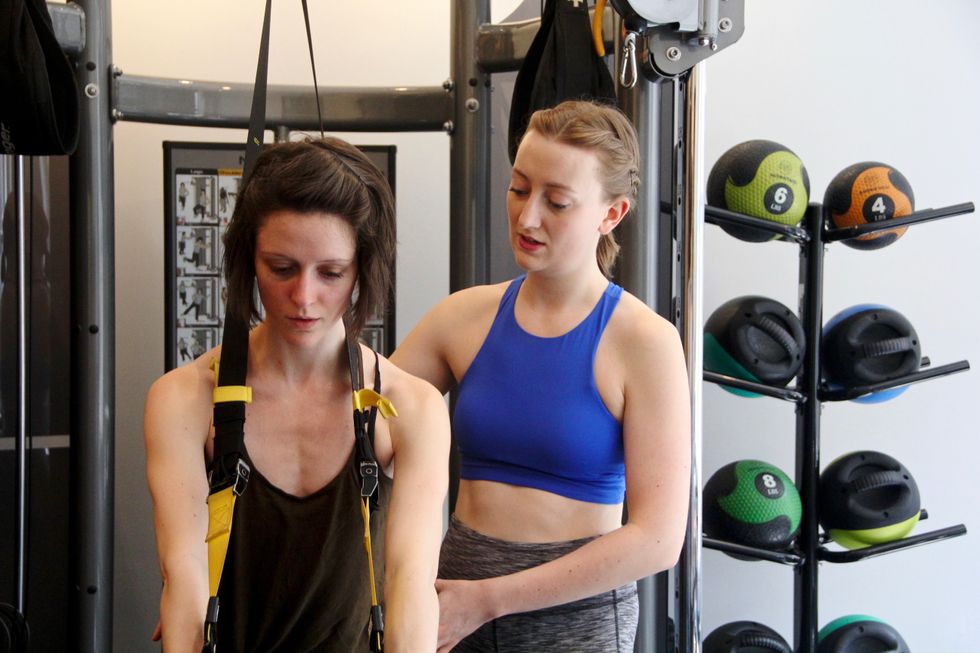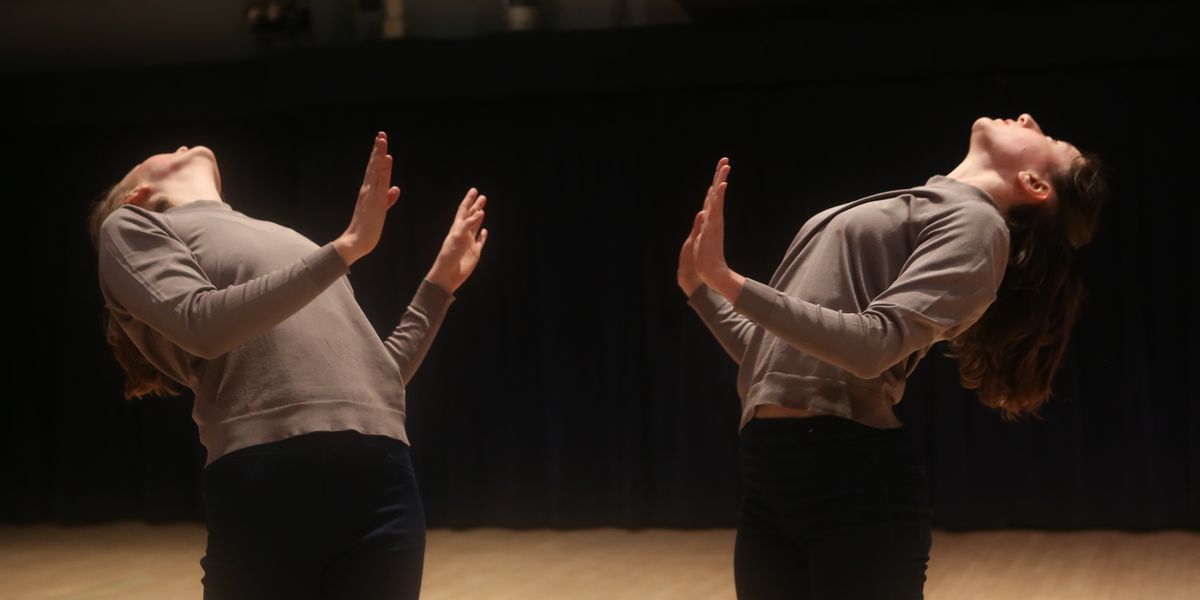Memo To Non-Dancers: No, Being A Professional Dancer Is Not Just "Fun" and "Easy"
“So what do you do?”
This is the first question many of us ask when we’re getting to know a new person—but it’s one I’ve come to dread. When I tell people that I’m a dancer, occasionally I am met with enthusiasm and interest. But more often, I’m met with confusion, condescension or even hostility. “Oh, that’s fun. I wish I could do something fun like that,” a new acquaintance once said to me. She then proceeded to tell me about how difficult her job was and how hard she was working, making it clear that in her mind “fun” meant “easy.” And if I had a dollar for every time a simple getting-to-know-you conversation has turned into a debate in which I’ve had to defend my career choice, maybe I could quit one of my other jobs.

Henderson working as a personal trainer at Studio 26. PC Mallory Rosenthal
That’s another thing that makes conversations with non-dancers more complicated: dance doesn’t pay my bills. To other artists, this is practically a given. Few of us are able to earn a living wage exclusively from the work we are most passionate about. So, I have other jobs: I’m a personal trainer and a freelance writer. When I introduce myself, I could just say that I’m a dancer and choreographer, and sometimes I do. But I take pride in all the things that I do, and in fact, I view them all as part of my dance practice. The money I make training and writing is what enables me to dance and make dances.
But explaining all that to non-dancers is a mouthful, and it’s confusing for many people. Most assume that being a professional dancer means dancing for a big company, but fewer and fewer dancers’ jobs look like that. I get tired of fielding questions about whether I’m just going to “pick one” career and stick with it, or explaining that dance isn’t a “hobby” for me just because it’s not where most of my money comes from.
I know that this is a negative cycle: experience has made me reluctant to talk about dance with non-artists. I feel guilty about not being a better ambassador for my art form. Maybe, I think, if I were better able to talk about why I’m willing to engage in this neverending hustle, people would come to understand and respect it more. It’s a financial issue, too. I think that all art is labor, but non-artists will never see it that way or be willing to invest in art if they don’t understand the work that goes into it.

Henderson and Hadley. PC Julie Lemberger
Many of the dancers in my circle share these frustrations. “I often find people’s attitudes towards dance completely off the mark. Most people think that dance is some kind of inborn gift, that dancers are naturally graceful, and that they themselves are naturally awkward and could never dance. That attitude downplays the many years of training required to do what we do, and the consistent hard work that dance demands,” said Rebecca Hadley.
But how to explain the effort behind something an audience may perceive as effortless or natural? “Dance is just as nuanced and specialized as any PhD program in the sciences,” says dancer, choreographer and teacher Eleanor Barisser. “I use that as an example because to most people, that is objectively rigorous. People understand that there is a ton of work behind the scenes to get to a PhD.” I’ve tried similar tactics with mixed success. The truth is that dance is unique in its combined demands on the physical body and the mind, and I find that translating it into purely academic or purely athletic terms always falls short.
“I’ve been able to surround myself with others in the arts community in New York who ‘get it’ and have had these frustrating conversations less often, which I prefer,” says Hadley. “But that also leaves the questions: How do dance artists reach the general population? Do we want to? Should that be a goal?”
As a choreographer, I do want to reach non-dancers. I don’t want to play to an echo chamber; I want people outside my community to see my work. What’s more, it’s helpful to my career as a young artist to show producers that I can generate an audience. But my friends, acquaintances and even family members seem to fall into two categories: the ones who “get it” and make an effort to come and see me perform, and the ones who don’t. I don’t expect that everyone in my social circle will make it to every performance, but I often debate whether it’s worth it to continue trying to reach the people whose interest doesn’t seem genuine.
I haven’t given up. I’m thinking about ways to bring my work to audiences who might not otherwise seek out dance, like dance on camera (since video is so easily shared online) and public site specific performance. But there are plenty of people who have been exposed to dance and still don’t value it. This is a personal issue for me and many other dancers, and with arts funding in such a precarious position politically, there is more at risk than just our hurt feelings.




